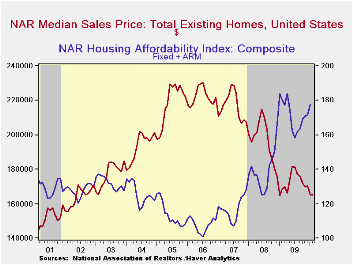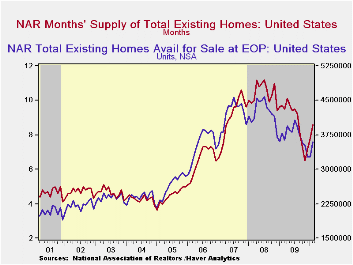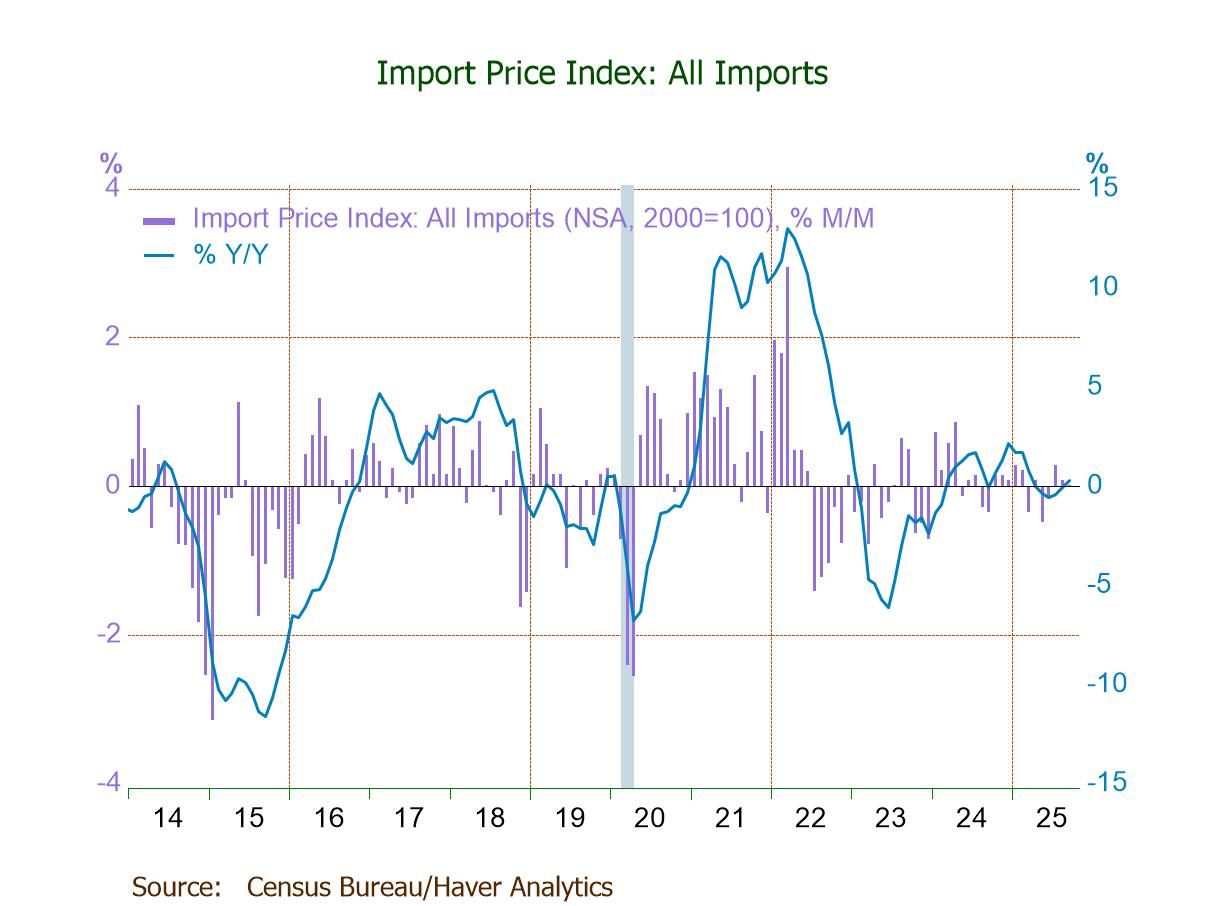 Global| Mar 23 2010
Global| Mar 23 2010U.S. Existing Home Sales Remain Depressed
by:Tom Moeller
|in:Economy in Brief
Summary
It probably was the weather that helped depress home sales last month. The National Association of Realtors reported that sales of existing homes fell 0.6% from January as winter storms again blanketed the East and Midwest regions. [...]
 It probably was the weather that helped depress home sales
last month. The National Association of Realtors reported that sales of
existing homes fell 0.6% from January as winter storms again
blanketed the East and Midwest regions. The slip to 5.0200M units
(SAAR) followed a little-revised 7.2% January decline and a sharper
16.2% December slump. February sales were the lowest since last June
and roughly matched Consensus expectations. Total sales include sales
of condos and co-ops. Sales of existing single-family homes alone fell
a larger 1.4% from January to 4.370M. (These data have a longer history
than the total sales series). Sales of condos and co-ops rose by nearly
one-third from the last year.
It probably was the weather that helped depress home sales
last month. The National Association of Realtors reported that sales of
existing homes fell 0.6% from January as winter storms again
blanketed the East and Midwest regions. The slip to 5.0200M units
(SAAR) followed a little-revised 7.2% January decline and a sharper
16.2% December slump. February sales were the lowest since last June
and roughly matched Consensus expectations. Total sales include sales
of condos and co-ops. Sales of existing single-family homes alone fell
a larger 1.4% from January to 4.370M. (These data have a longer history
than the total sales series). Sales of condos and co-ops rose by nearly
one-third from the last year.
Sales have been helped by a recently extended tax credit for first-time home buyers. The credit of up to $8,000 which runs though April 30. Additionally, a new credit of up to $6,500 is available to some existing home owners who move. The full details of the home-buyer tax credit can be found here.
The median price of all existing homes was roughly unchanged last month at $165,100 but off 30% from the 2007 peak. The price of a single-family home inched up m/m to $164,300 (-2.1% y/y). Price weakness sharply raised home affordability; by 7.8% since July and by two-thirds from the 2006 low. The median family income for existing home buyers was $60,494 and mortgage payments amounted to 14.1% of that total.
The number of unsold homes (single-family & co-ops) for sale rose 9.5%. However, it was down from last year and near the lowest since 2006. At the current sales rate there was an 8.6 months' supply of homes on the market. The latest figure was up m/m due to depressed sales but still down from a high of 11.3 months during April of 2008. For single-family homes, the inventory rose m/m to an 8.2 months' supply, near the lowest since 2007.


| Existing Home Sales (Thous, SAAR) | February | January | December | Feb. Y/Y | 2009 | 2008 | 2007 |
|---|---|---|---|---|---|---|---|
| Total | 5,020 | 5,050 | 5,440 | 7.0% | 5,160 | 4,893 | 5,674 |
| Northeast | 840 | 820 | 920 | 12.0 | 863 | 845 | 1,010 |
| Midwest | 1,110 | 1,080 | 1,160 | 8.8 | 1,166 | 1,130 | 1,331 |
| South | 1,850 | 1,870 | 2,020 | 6.9 | 1,913 | 1,860 | 2,243 |
| West | 1,220 | 1,280 | 1,350 | 3.4 | 1,216 | 1,064 | 1,095 |
| Single-Family Sales | 4,370 | 4,430 | 4,760 | 4.3 | 4,573 | 4,341 | 4,960 |
| Median Price, Total, $ (NSA) | 165,100 | 164,900 | 170,500 | -1.8 | 172,742 | 197,233 | 216,633 |
Tom Moeller
AuthorMore in Author Profile »Prior to joining Haver Analytics in 2000, Mr. Moeller worked as the Economist at Chancellor Capital Management from 1985 to 1999. There, he developed comprehensive economic forecasts and interpreted economic data for equity and fixed income portfolio managers. Also at Chancellor, Mr. Moeller worked as an equity analyst and was responsible for researching and rating companies in the economically sensitive automobile and housing industries for investment in Chancellor’s equity portfolio. Prior to joining Chancellor, Mr. Moeller was an Economist at Citibank from 1979 to 1984. He also analyzed pricing behavior in the metals industry for the Council on Wage and Price Stability in Washington, D.C. In 1999, Mr. Moeller received the award for most accurate forecast from the Forecasters' Club of New York. From 1990 to 1992 he was President of the New York Association for Business Economists. Mr. Moeller earned an M.B.A. in Finance from Fordham University, where he graduated in 1987. He holds a Bachelor of Arts in Economics from George Washington University.






